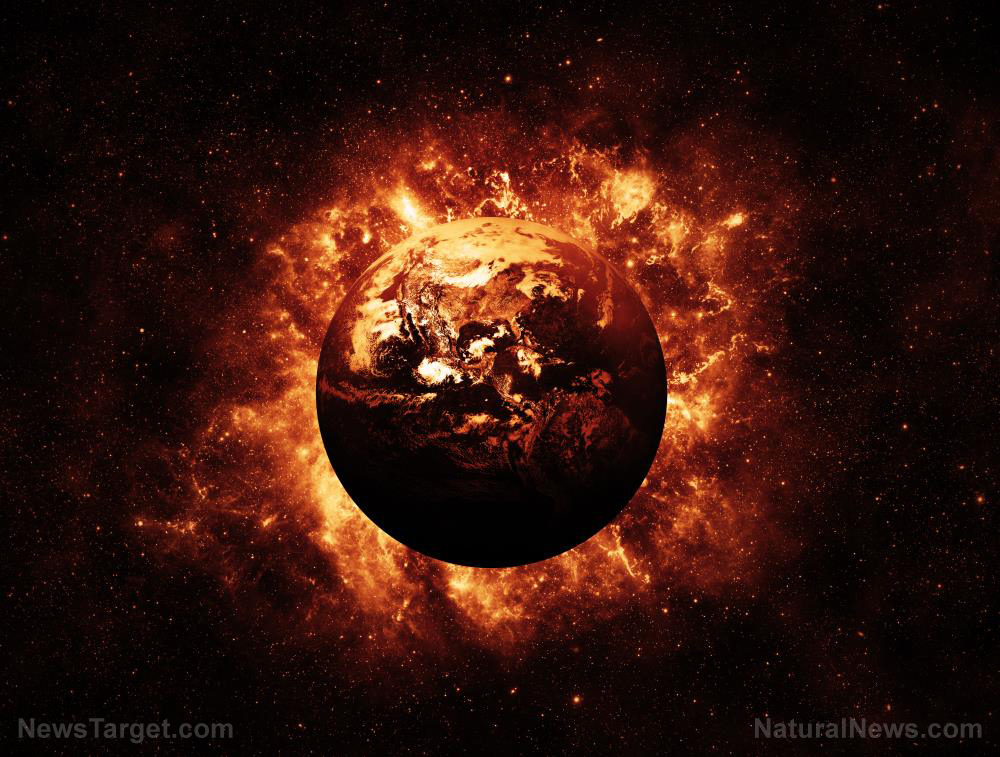
Scientists warn of MASSIVE solar storms: “We need to be better prepared”
By Edsel Cook
Swedish researchers found evidence that three solar storms engulfed the Earth during the past 3,000 years. The earlier instances of turbulent space weather dwarfed the ones recorded in history books.
If one of those ancient storms took place in modern times, it would devastate electrical and electronic systems. Experts warned that communications, computer-based technologies, power grids, and satellites are vulnerable to rough solar weather.
When the sun experiences severe activity, it releases vast amounts of excited particles. The resulting solar storm covers vast distances at rapid speeds.
Its particles may burn out the electronic circuits of satellites. It will also trigger electric surges that shut down large sections of terrestrial power grids.
Recent incidences of solar storms include the one that hit Quebec, Canada during 1989 and another event that affected Malmo, Sweden in 2003. But a much older storm from 660 B.C. made those look positively calm.
“If that solar storm had occurred today, it could have had severe effects on our hi-tech society,” explained Lund University researcher Raimund Muscheler.
Muscheler and his team came upon the evidence for the ancient solar storm while studying ancient ice cores excavated from Greenland. Analysis of other ice cores and growth rings of old trees showed that another two huge storms took place in 775 A.D. and 994 A.D.
Fortunately, solar storms of that size happen to be rare. But the Lund researchers believed that the very rough patches of space weather regularly took place.
“That’s why we must increase society’s protection against solar storms,” warned Muscheler. “Our research suggests that the risks are currently underestimated. We need to be better prepared.”
(Related: Climate change on Earth is “significantly” impacted by solar activity, profound new study confirms.)
A solar storm has four means of affecting Earth
A solar storm involved four different events. Solar flares, coronal mass ejections (CMEs), solar wind streams, and solar energetic particles affect the Earth in different ways.
A solar flare is a big eruption that occurs in the atmosphere of the sun. It shoots a torrent of photons away from the star.
In comparison, a CME hurls large masses of plasma and magnetic fields into space. The stellar cloud may travel in any direction and moves fast enough to go through the solar wind.
When a hole appears in the corona of the sun, it releases streams of fast-moving particles that become a solar wind. While a coronal hole may form on any part of the sun, they only threaten the Earth if they spawn near the equator of the star.
Solar energetic particles comprise the last segment of a solar storm. Researchers believe that these come from the shock waves at the foremost part of a solar flare or a CME when the space weather event goes through the solar wind.
Human technology is at the mercy of solar activity
Current space missions take place in low orbit within the Earth’s protective atmosphere and magnetic field. But solar storms will irradiate astronauts during spacewalks.
A solar flare may damage or destroy expensive satellites. It can also disrupt the geomagnetic field that guides airliners to destinations. Lastly, it may overload power grids and cause electrical outages.
A CME will kick off geomagnetic storms across the Earth. It will jam radio signals, affect satellite navigation systems, and burn out electrical networks.
It is possible to protect against the destructive effects of solar storms. Think of solar weather as a natural counterpart of electromagnetic pulses (EMP) and prepare accordingly.
Set up Faraday cages around containers or rooms that store electronics. Prepare for power outages by stockpiling food, water, lighting, medical supplies, and other basics. And while you’re at it, consider picking up survival skills for when the power grid does go down due to a solar storm.
Sources include:
Dailymail.co.uk
Phys.org
Source for this post
Knowledge Is Power: The New Realistic Observer is a non-profit blog dedicated to bringing as much truth as possible to the readers.
Big Tech has greatly reduced the distribution of our stories in our readers' newsfeeds and is instead promoting mainstream media sources. When you share with your friends, however, you greatly help distribute our content. Please take a moment and consider sharing this article with your friends and family. Thank you
Please share…We've been Exiled from Facebook for Two years now …….We also think you’ll find mewe.com a
better non-censored social media venue that isn’t attempting to silence
a pro-American narrative that only is out to make America first and
great again!
No comments:
Post a Comment